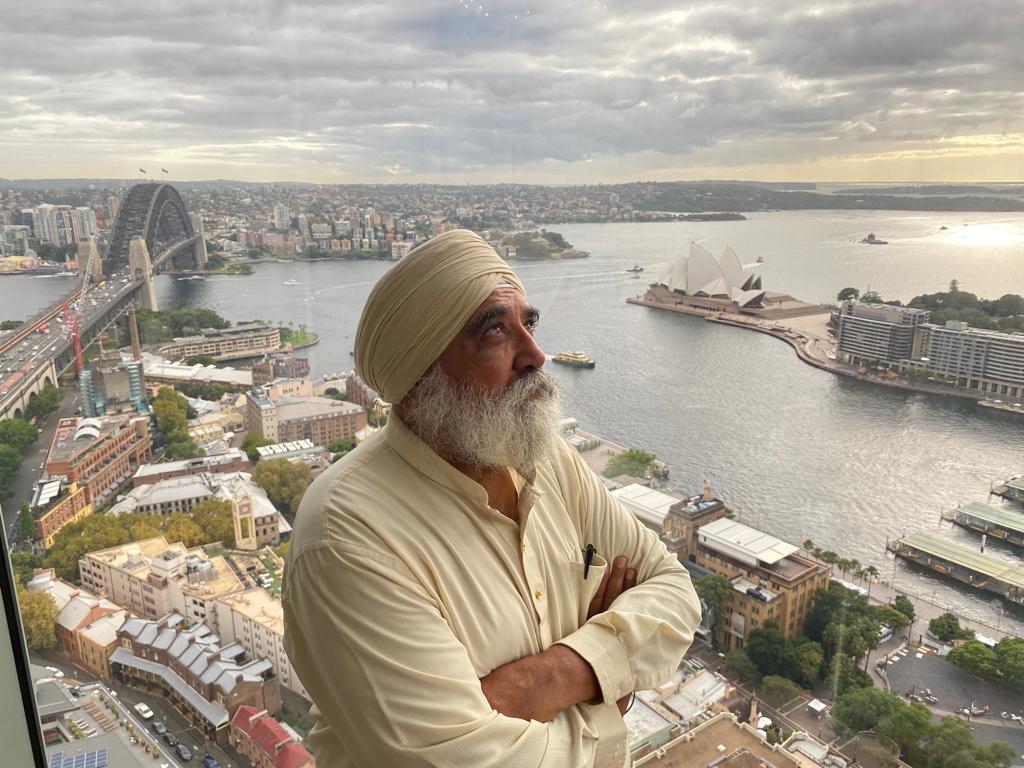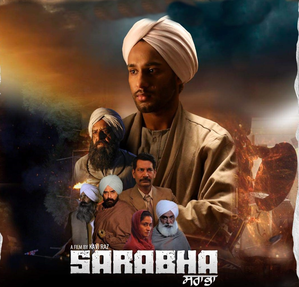
KUALA LUMPUR, Nov 4: Do you know that a Malaysian-born Sikh was involved in singing one of the Sikh hymns in the just released Punjabi film “Sarabha”(Cry For Freedom)?
He is none other than Dya Singh, 75, a musician-cum-ex journalist and accountant who now lives in Melbourne, Australia!
Dya, who is renowned for his innovative approach towards singing or reviving ancient Punjabi hymns, said he was proud to have been involved in the film.
“It was my lifelong dream to actually sing in a movie. So I have ticked my bucket list,” said Dya, whose ancestors also originated from the same district of Ludhiana as Sarabha himself.
Asked how he was picked for one of the movie’s soundtracks, Dya, an Old Boy of Victoria Institution here, said: “I met the director Kavi Raz about 20 years ago when I was on tour with my group in USA. He promised to use our music in one of his movies.
“About five years ago he contacted me and asked if I could produce two pieces of music. One was the popular Western hymn ‘Amazing Grace’. He wanted this to sound as it would be sung in a African-American church. The other was a Sikh hymn ‘Tu Sultan kehan haun Miyan’ (You are the King, but where are you?). He wanted this hymn as it would have been sung in the early 1900’s.
“We did our research and produced both renditions as required. I am yet to see the movie and not sure how many of the renditions have been used. But am proud that there is a Malaysian/Australian input into this blockbuster Punjabi movie. I hope to see the movie in a few days.”
“Sarabha” is a film about a young Indian revolutionary, Kartar Singh Sarabha, who was hanged by the British at the age of 19 in Lahore in 1915. Japtej, an actor from Chandigarh, plays the lead role of Sarabha in the movie.
Directed by Los Angeles-based director Kavi Raz, the film has drawn a huge response from audiences in Canada and the US after it was released on Friday, Nov 3.. The film was shot in Ganganagar, India, as well as in Canada and the US. In 2017, Kavi Raz had directed a film on Maharaja Duleep Singh called “The Black Prince”.
“Sarabha” is described as a historical document on the role of Gadar heroes in India’s Independence. It was said that Sarabha, the hero, had inspired Bhagat Singh to become one of the most influential revolutionaries of the Indian Independence Movement.
Born at Sarabha village, now part of Ludhiana, Sarabha sailed to the US at the young age of 15 to study at the University of Berkeley. However, after arriving in the US, young Sarabha became involved in the Gadar movement.
This movement was an initiation of Indian expatriates on the west coast of the US and Canada. They aimed to liberate India from British rule.
The Ghadar Movement was an early 20th-century international political movement founded by expatriate Indians with the aim of overthrowing British rule in India. The term “Ghadar” is derived from Arabic and means “revolt” or “rebellion”.
This movement was created by revolutionaries who lived and worked on the West Coast of the United States and Canada.
Following the outbreak of World War I in 1914, some Ghadar party members returned to Punjab to incite armed revolution for Indian Independence. Ghadarites smuggled arms into India and encouraged Indian troops to mutiny against the British. This uprising, known as the Ghadar Mutiny, unfortunately, did not succeed.
From 1914 to 1917, Ghadarites continued underground anti-colonial actions with the support of then some foreign powers in Germany and Turkiye.
In retrospect, although the Ghadar Movement’s attempts to overthrow the British Raj were unsuccessful, its insurrectionary ideals left a lasting impact. In summary, the movement was a bold and determined effort by Indian expatriates to challenge colonial rule and fight for their homeland’s independence.
WE
